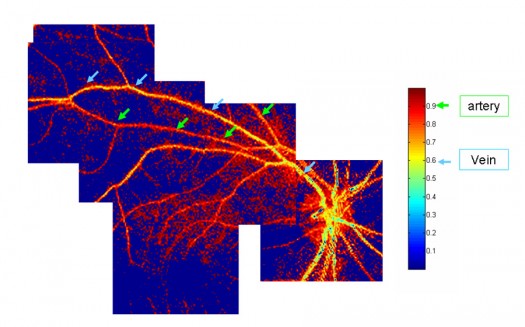A Missile in Your Eye
October 2007By by Patrick L. Barry
by Patrick L. Barry;>> Macro menumgr_macro_spaceplaceimage not found <<
For the last 15 years, Greg Bearman and his colleagues at JPL have been working on a novel design for a spectrometer, a special kind of camera often used on satellites and spacecraft. Rather than snapping a simple picture, spectrometers measure the spectrum of wavelengths in the light coming from a scene. From that information, scientists can learn things about the physical properties of objects in the photo, be they stars or distant planets or vegetation on Earth's surface.In this case, however, the challenge was to capture snapshots of short-lived events—like missile launches! The team of JPL scientists designed the new spectrometer, called a computed tomographic imaging spectrometer (CTIS), in collaboration with the Ballistic Missile Defense Organization as a way to detect missiles by the spectral signatures of their exhaust.
But now the scientists are pointing CTIS at another fast-moving scene: the retina of an eye.
Blood flowing through the retina has a different spectral signature when it is rich in oxygen than when it is oxygen deprived. So eye doctors can use a spectrometer to look for low oxygen in the retina—an indicator of disease. However, because the eye is constantly moving, images produced by conventional spectrometers would have motion blurring that is difficult to correct.
The spectrometer that Bearman helped to develop is different: It can capture the whole retina and its spectral information in a single snapshot as quick as 3 milliseconds. "We needed something fast," says Bearman, and this spectrometer is "missile-quick."
CTIS is even relatively cheap to build, consisting of standard camera lenses and a custom, etched, transparent sheet called a grating. “With the exception of the grating, we bought everything on Amazon,” he says.
The grating was custom-designed at JPL. It has a pattern of microscopic steps on its surface that split incoming light into 25 separate images arranged in a 5 by 5 grid. The center image in the grid shows the scene undistorted, but colors in the surrounding images are slightly “smeared” apart, as if the light had passed through a prism. This separation of colors reveals the light's spectrum for each pixel in the image.
”We're conducting clinical trials now,” says Bearman. If all goes well, anti-missile technology may soon be catching eye problems before they have a chance to get off the ground.
Information about other NASA-developed technologies with spin-off applications can be found at http://www.sti.nasa.gov/tto.

This three-color composite image from the computed tomographic imaging spectrometer shows the oxygenation of the blood in the arteries and veins of a human retina. (Arteries appear red, veins appear yellow.)
This article was provided by the Jet Propulsion Laboratory, California Institute of Technology, under a contract with the National Aeronautics and Space Administration.



